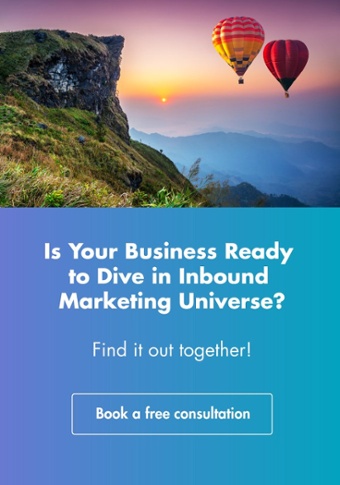Did you know that about 60% of all traffic on the web starts with a Google search, and people out there firstly go to Google when they wanna buy something?
So do I, and probably you, too!
What’s more, you presumably make part of that number of customers who haven’t the time or patience to look over the first page of their search results.
It means that, if you aren’t positioning almost at the top of the research, you are wasting a lot of chances to meet your buyer persona, namely your target customers.
And that’s where SEO comes in!
The acronym SEO stands for Search Engine Optimization and represents the science of driving targeted website traffic to your website from search engines.
Ready to see how it can get your e-store on the first page? Let’s start!
The SEO golden rules that will make your website rank
1. Never underestimate the power of keywords
The first rule ever to rank high into SERPs (Search Engine Results Pages) is to look for the right keywords for each page of your website.
To do so, you should have in mind a perfect picture of who your buyer persona is, as well as paying attention to those three metrics:
- Relevancy: the extent to which the content of your website corresponds to the search term used. In fact, websites and web pages on Google are ranked based on their content relevancy, which means that it tends to favor the websites that consist of meaningful content;
- Search volume: namely the quantity of searches that occur for a specific keyword or term, that’s often expressed as searches per month;
- Ranking competition: this is indicated on a scale from 0 to 100. Just remember that the lower the value, the easier it is to rank for the keyword on the first SERP.
Now, going into practice, are you wondering how you should choose those keywords?
The answer is by looking for a mix of body and long-tail keywords:
- Body keywords are 2/3-word phrases, more specific and successful than single words;
- Long-tail keywords are longer phrases that are quite specific and composed by words that on themselves don’t get a high search volume, but when linked up together create the majority of online searches.
But it isn’t enough!
In fact, you should never forget to map your keywords according to content types: each page on your site — going from product pages, categories, blog posts, and homepage — should rank for different keywords.
For instance, some of your pages can target searches for information (e.g. “what is eco-friendly fashion”), while others can target keywords with a lower search volume but that indicate a will to buy (e.g. “buy eco-friendly clothes”).

Anyway, let me give you a precious piece of advice: the simplest way to find the perfect combination of keywords is by adopting a Keyword Research Tool.
There are millions of them out there, so let me suggest you a few ones to check out:
- SEMRush
- KeywordTool.io
- Moz Keyword Explorer
- Seed Keywords
2. Optimize your website as far as possible
The second rule you should be aware of is the importance of the so-called Google dwell time, namely making sure that your content is so relevant that visitors want to stay longer on your site.
Because the longer they stay, the higher your website ranks! Cool, isn’t it?
To achieve that, you need to optimize your website’s usability and mobile appearance, by:
- Ensuring your visitors are able to find what they want easily, through an intuitive navigation and few distractions, speeding up the purchase process;
- Adopting a live chat that pops up as soon as the visitors enter your homepage, to assist them during their online shopping experience;
- Adding some customer reviews;
- Making sure your website is mobile-friendly, because since mobile surpassed desktop as the most-used device to access e-commerce websites, Google’s algorithm gives higher ranking to mobile-optimized websites;
- Paying attention to your page speed, considered that half of mobile users would give up on a website that takes more than a few seconds to load;
- Never forgetting that UX is a very important metric for SEO: as a matter of fact, a valuable user experience always brings more traffic.
What’s more, pay attention to your website pages’ SEO optimization, by:
- Using only one H1 (header 1) tag on your pages, which should contain the page’s main keywords;
- Keeping your page titles under 60 characters and the meta descriptions under 155 characters;
- Writing compelling and click-baiting page titles that describe the content and its keywords;
- Including the keyword in your page URL;
- Making certain that all your images have their descriptive alt tags, to allow your photos appearing among Google Image results.
3. Never leave the content king out
Last but not least: go blogging!
SEO and content are closely linked up each other: the better content you publish, the higher you’ll rank!
In fact, Google likes fresh content because it’s an indicator that your website is active and relevant, and that you are an expert in your own fashion field.
So, just bear in mind that:
- A blog gives your customers more ways to find you and more reasons to return and spend more time on your site;
- Blogging is also a great strategy to achieve search traffic through the use of long-tail keywords, which account to 70% of all online searches;
- Customers often share blog articles on social media, giving you more online visibility.
And there’s more: SEO, in fact, plays a meaningful role also in the blog copywriting stage.
So, when you write a blog post for your e-store you should:
- Optimize each post for one or a few keywords;
- Make sure its design is mobile-friendly and easy-to-read;
- Make it easy for visitors to share it through the social media sharing buttons;
- Add internal links to spread ranking power around your website; Always put a CTA in there, and possibly a premium resource or landing page where redirect your visitors;
- Always create original content that’s relevant to your online store to make the search engines understand your website and consider it useful for your buyer persona.
Those are just some rules to amplify your SEO power. But, if you want to discover more about how SEO can help you fortify your e-commerce online presence, don’t lose any more time!
Just book a SEO Consultation with a YourTarget’s expert now, and we’ll provide you with the solutions you have always been looking for!

